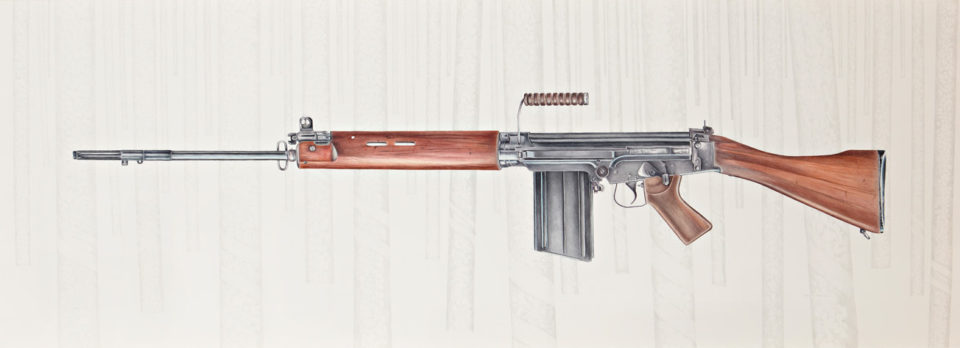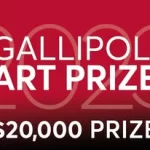
DEIRDRE BEAN
Major Smith’s Petrichor
Watercolour & Graphite on Arches 300gsm Paper
70 x 156cm
Major Smith’s petrichor depicts a life-sized L1A1 gas-operated semi-automatic rifle, the standard issue personal weapon for Australian soldiers during the Vietnam War. In the background the viewer can see lightly sketched rubber trees. Imagine petrichor, the smell of the first drops of rain, warning of a tropical downpour.
The battle of Long Tan unfolded in a rubber plantation on 18thAugust 1966. D Company 6RAR, led by Major Harry Smith, was unexpectedly surrounded by the enemy. His 108 men faced an estimated 2500 Viet Cong. Courage, calmness and control were required as the odds were overwhelmingly against them. Under constant attack, the Australians held their position. Their small arms fire was accurate and deadly despite appalling conditions. Poor visibility from monsoonal rains and low vegetative canopy made assistance from the air near impossible.
After three and a half hours of intense battle the enemy retreated. The Viet Cong lost in excess of 245. We lost 18. The bravery that day was recognized by the US President Lyndon B Johnson who presented Company D, 6RAR with a Presidential Unit Citation for extraordinary heroism.
The Gallipoli Club creed reminds us of the special qualities of loyalty, respect, love of country, courage and comradeship personified by the heroes of the Gallipoli campaign. These exact qualities were demonstrated by D Company that fateful day at Long Tan, who demonstrated courage in holding firm, backed their mates and as the Prime Minister of Australia, Harold Holt, wrote at the time ‘acquitted themselves in the best Australian Tradition’.
Major Smith’s petrichor is not intended to glorify weaponry or war, but to remind us of the courage and heroism our soldiers exemplified in the pursuit of peace.













